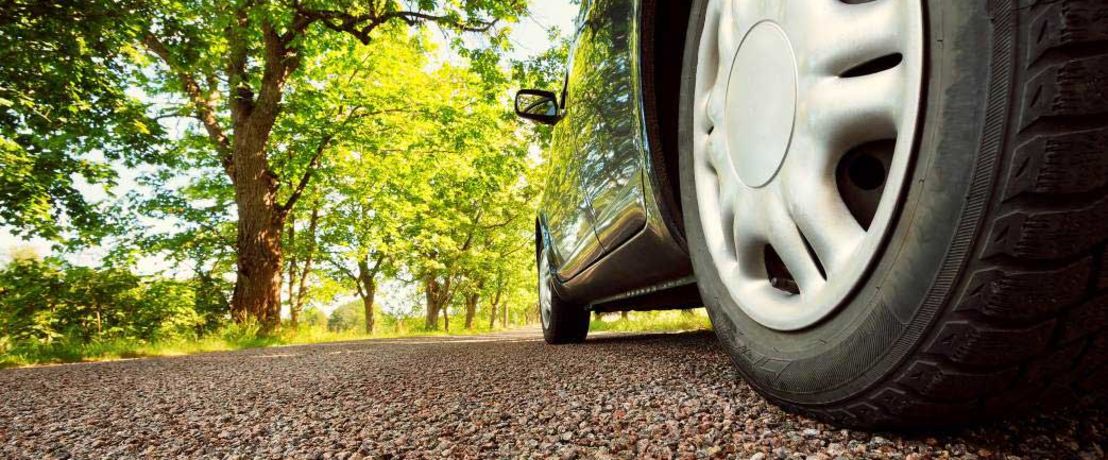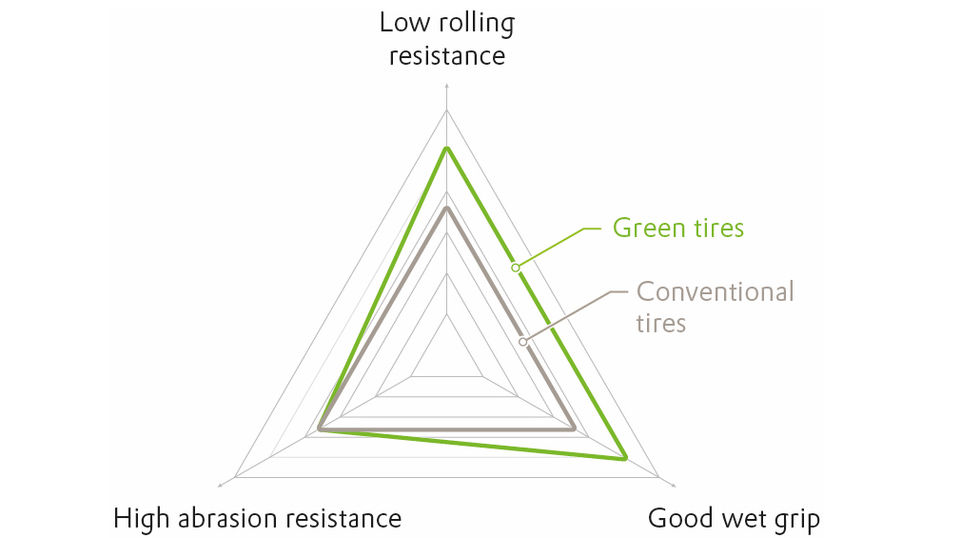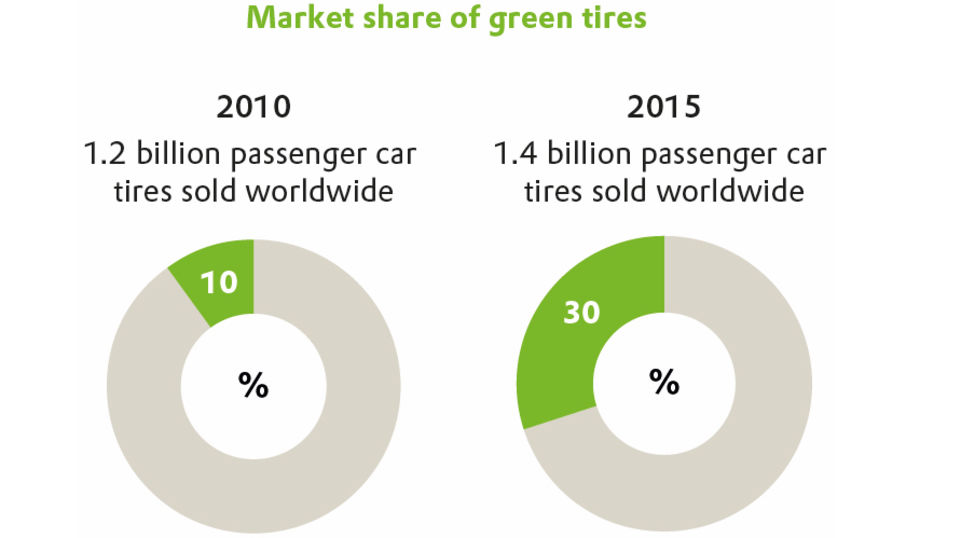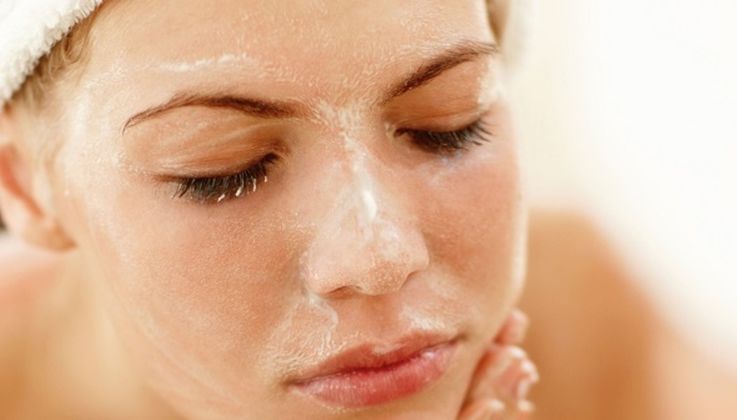
Keep on rolling!
The green tire
The “green” tires that are made with the help of Silica/Silane-system from Evonik save fuel, thanks to their low rolling resistance. They also safely keep vehicles on the road, even under extreme weather conditions.
More transparency for drivers: Since 2012, the EU tire label has shown how good a tire’s rolling resistance, wet grip, and noise levels are. The tires are classified from A (best) to G (worst) in these three categories. For example, a tire that has an “A” efficiency classification consumes about 7.5 percent less gasoline than does a class “G” tire. It also brakes much faster on wet surfaces at high speeds.
One such ideal tire is the “green tire”, which was developed back in the early 1990s. The special feature of this tire is that Silica is used as a filler beside of carbon black. However, without the use of additives the polar Silica is incompatible with the non-polar E-SBR rubber. Some time ago, researchers from Evonik discovered that organosilanes act as outstanding bonding materials between Silica and rubber. That discovery marks the birth of Silica/Silane-system.
Low rolling resistance, great wet grip
How does this technology benefit consumers? Green tires have a lower rolling resistance and better wet grip than conventional tires, which only contain carbon black as a filler:

Drivers who buy conventional tires always have to decide whether they would rather have lower rolling resistance or a better wet grip. Although low rolling resistance results in low fuel consumption, it also means that the tire will have less grip when it rains, as well as a shorter service life.
Green tires solve this zero-sum game. Cars equipped with Silica/Silane tires stay safely on the road even when it’s raining. At the same time, the tires’ increased fuel efficiency reduces the strain on the environment and on the driver’s budget.
As a result, Silica/Silane-system has generally become the norm for car tires in Europe. Because tires imported from European countries also bear this tire label, manufacturers in North America and Asia have to expect that consumers will more and more often purchase class A or B tires. That serves as a strong incentive for these manufacturers to offer energy-efficient material mixtures as well. That’s why green tires’ share of the global tire market has steadily risen since 2010.

Evonik is the only company that produces Silica as well as Silanes for its customers from the rubber-processing industry. In recent years the company’s researchers have done a great deal to further enhance green tires. For example, since 2012 they have been holding regular workshops to test various methods for making green tires even greener.
Bicycle tires are also becoming greener
These efforts have led to the development of POLYVEST® ST, a liquid polybutadiene which ensures that the Silica/Silane-system is even more compatible with rubber in tire mixtures. In 2015 Evonik submitted a patent application for this functional molecule. Material tests have already shown that the rolling resistance of the optimized green tire is 15 percent lower than before, whereas its wet grip and abrasion resistance remain unchanged.
However, green tires aren’t used only for cars. Evonik is also employing a special combination of Silica, rubber, and Si 363® Silane for bicycle tires. During the Giro d’Italia 2016, several racing bicycles had tires containing Si 363®, which ensured that the cycling pros reached the finish line quickly and safely, no matter whether the road was wet or dry.



